Six hidden secrets in Da Vinci’s Last Supper painting – how many were YOU aware of?
The painting of The Last Supper by the famous artist Leonardo da Vinci is one of the most famous and iconic paintings in the world.
But a historian has recently pointed out what he claims are six hidden symbols in the 1495 AD masterpiece that tells the story of Jesus’ arrest and resurrection that are often overlooked.
The painting depicts Judas holding the silver he was given for handing Jesus over to the authorities, a blogger named Culture Critic explains. However, these theories have never been confirmed by Da Vinci.
Meanwhile, St. Peter can be seen holding a knife, symbolizing his later attempt to free their leader.
Then there is the mysterious figure to the left of Jesus. Some claim he was the only woman seated at the table. However, some historians believe he is one of the youngest male apostles.
A history expert now claims that Da Vinci hid symbols referring to the betrayal of Judas and the death of Jesus in his artwork The Last Supper (pictured), which was created around 1495 AD.
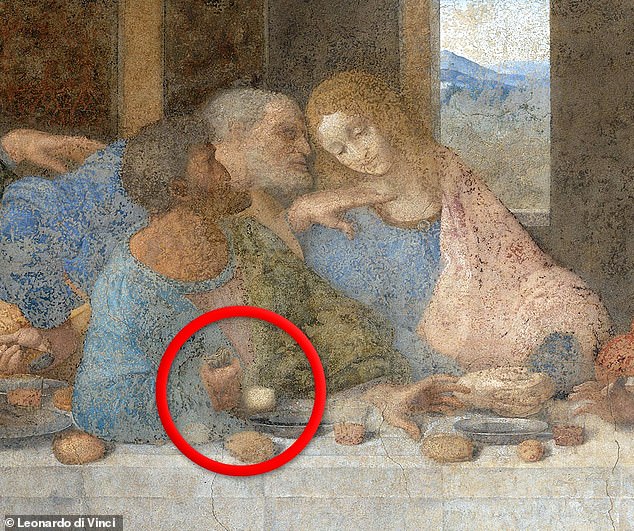
Judas, who had already condemned Jesus to death by revealing his location, is cast into the shadows as he holds one of the 30 pieces of silver he received as payment for betraying his leader
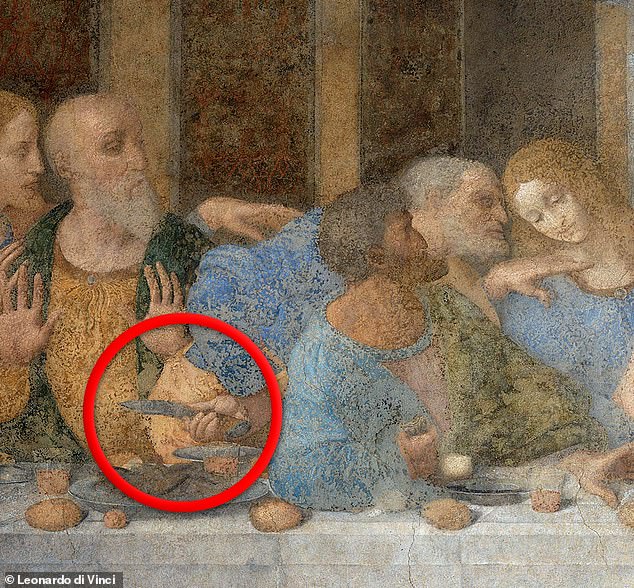
Saint Peter holds a knife, symbolizing his attempt to save Jesus by cutting off Malchus’ ear when he arrested their lord and savior, while also foretelling the ultimate downfall of Judas.
The Bible tells the story of the Last Supper in 33 AD, when Jesus met with his twelve apostles and told them that one of them would betray him. He also said that his death was imminent.
He blessed the bread and wine, explaining that this was a symbol of His body that would be broken and the blood that He would shed for the forgiveness of their sins.
Instead of focusing on distributing bread and wine to Jesus, Da Vinci had the apostles shocked by the news that Jesus would die.
Judas, who had already condemned Jesus to death by revealing his whereabouts before the evening meal, is cast into the shadows as he holds one of the 30 pieces of silver he has been given as payment for betraying his leader.
Right next to Judas’ hand is what appears to be a salt cellar that he has knocked over, symbolizing his broken covenant with God, the cultural critic wrote in his after on X.
‘It is the complexity and symbolism woven into it that people have speculated about since time immemorial. [da Vinci created the painting]. And as always with Leonardo, nothing is a coincidence,’ the expert said.
The salt theory had been proposed by scientists before, but salt shakers were not invented until the late 19th century.
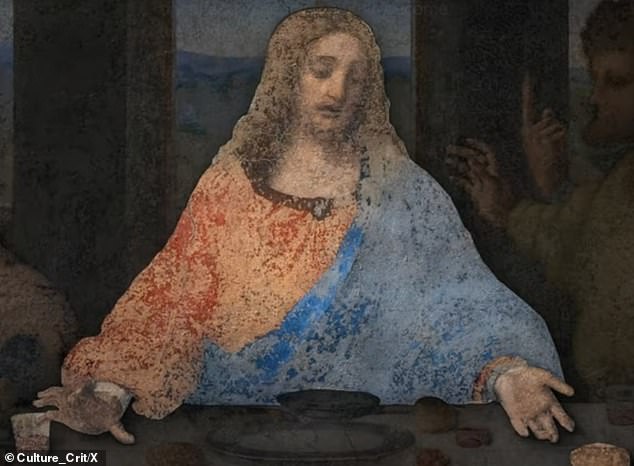
Da Vinci’s depiction of Christ taking bread and wine shows him positioned in a triangle, symbolizing the Holy Trinity – a Christian doctrine that holds that God exists as three persons: God the Father, Jesus the Son, and the Holy Spirit.
He further explained that da Vinci’s depiction of Christ reaching for bread and wine assumes a triangular pose, symbolizing the Holy Trinity and depicting yet another hidden secret.
This is a Christian doctrine that states that God exists in three persons: God the Father, Jesus the Son, and the Holy Spirit.
Da Vinci went one step further by painting St. Peter with a knife, which contributed to the “fascinating reactions of each apostle,” Cultural Critic claimed.
The scholar added that the knife is said to be a sign of Peter’s attempt to save Jesus by cutting off Malchus’ ear when he arrested their lord and savior. It is also said to foreshadow Judas’ eventual downfall.
Malchus, a servant of the Jewish high priest Caiaphas, was one of the 450 men ordered to arrest Jesus.
In the Bible text Matthew 27:3-10 the death of Judas is described. He felt guilty about his betrayal and tried to return the money he had received, but then threw the money to the chief priests and elders. Then he wanted to hang himself.
However, Acts 1:18-19 describes an even more gruesome death: ‘With the wages that Judas received for his wickedness he bought a field; and falling facedown, his body burst open, and all his bowels gushed out.’
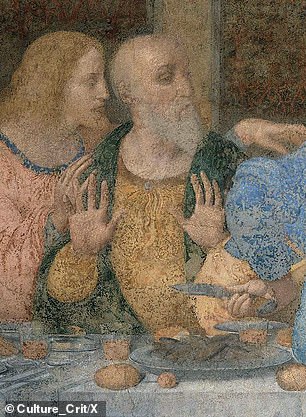
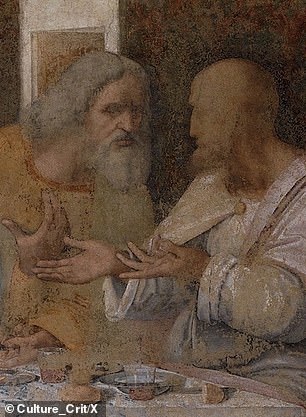
The Bible tells the story of the Last Supper in 33 AD, when Jesus sat with his twelve apostles and told them that one of them would betray him, adding that his death was imminent.
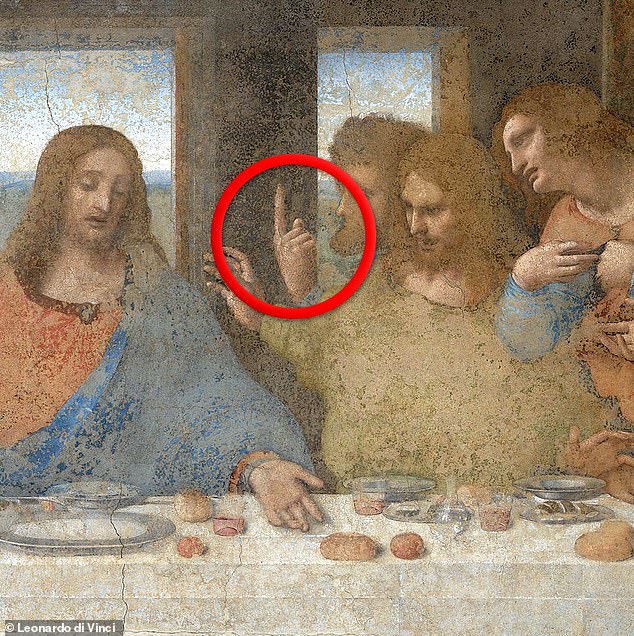
Saint Thomas stands behind Jesus on the left with his finger ‘curiously raised in the air’, which may symbolize the apostle later demanding proof that Jesus had risen from the dead
Saint Thomas stands behind Jesus on the left with his finger “curiously in the air,” which could symbolize the apostle later demanding proof that Jesus had risen from the dead, Culture Critic claimed.
Thomas stuck his finger into a wound in Jesus’ side as evidence and according to John 20:29 in the Bible, the Lord said to him, “Have you believed because you have seen Me? Blessed are those who have not seen and yet have believed.”
However, there are also people who claim that the statue is a portrait of Da Vinci, who was also skeptical about the resurrection of Christ.
There are also parts of the painting that are still a mystery, the most famous part being the supposed woman standing next to Jesus.
Although her identity has never been confirmed, some believe she is Mary Magdalene who traveled with Jesus and was one of his faithful followers.
Others, however, claim that it is actually the youngest disciple, John. Because of his pale skin and feminine features, people may think that it is a depiction of a woman.
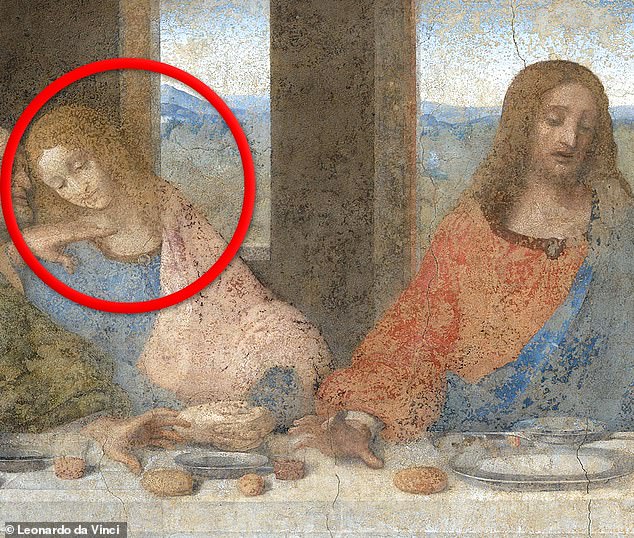
There is a mysterious figure to the left of Jesus, who some claim was the only woman seated at the table. However, some historical scholars have suggested that it is the youngest disciple, John, whose pale skin and feminine features have led some to believe that it is a depiction of a woman.
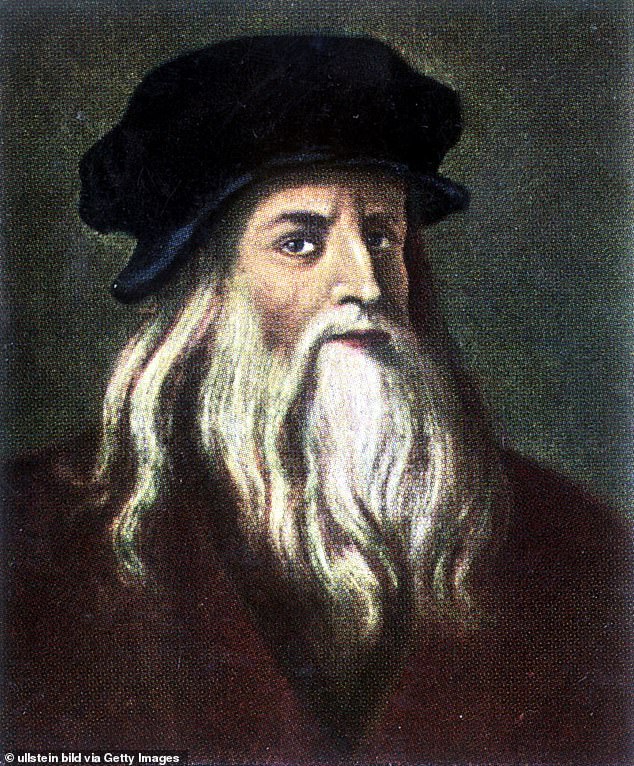
Leonardo da Vinci (pictured) painted The Last Supper in 1945 AD and hid symbols throughout depicting the story of Jesus’ arrest and resurrection
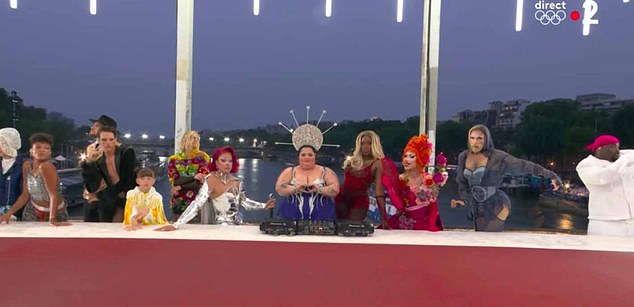
The scene from the 2024 Paris Olympics showed dancers, transvestites and a DJ posing in front of a table in a shot that appeared to show the apostle’s last meal with Christ before he was crucified
The revelation comes as the 2024 Olympic Games in Paris are under fire over the way the Last Supper was depicted during last week’s opening ceremony.
The scene showed dancers, transvestites and a DJ posing in front of a table. It appeared that the scene depicted the apostle’s last meal with Christ before he was crucified.
French theatre director Thomas Jolly created the segment, claiming that it was not referring to the Last Supper but to the Greek god of wine and merrymaking, Dionysus, thereby connecting the plays to their Greek roots.
The Olympics posted footage of the event on X, to write: ‘The interpretation of the Greek God Dionysus makes us aware of the absurdity of violence between people.’
Although Jolly claimed the images had nothing to do with The Last Supper, Olympics producers told The Wrap that “Jolly took inspiration from Leonardo da Vinci’s famous painting when creating the setting.
“It is clear that there was never any intention to show disrespect to any religious group or belief… [Jolly] is not the first artist to reference a world-famous work of art,’ the producers said.
“From Andy Warhol to ‘The Simpsons,’ many have done it before him.”
